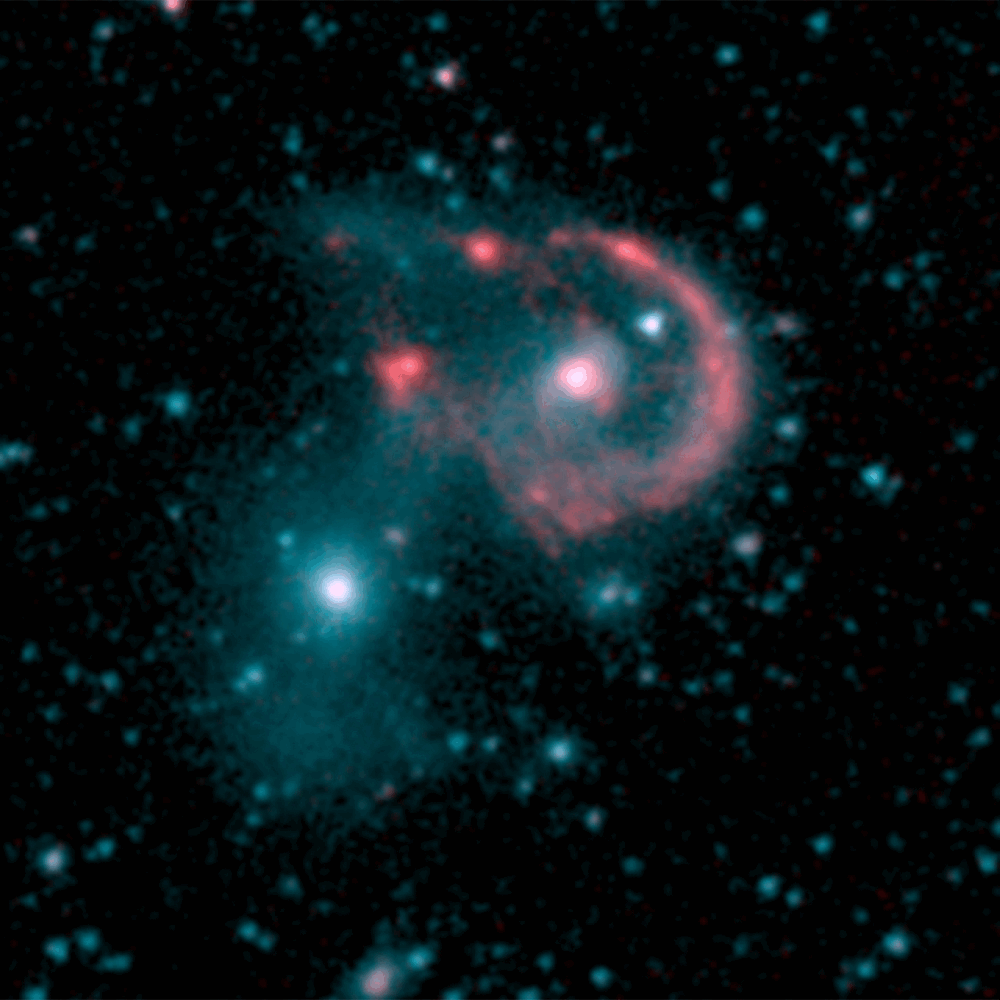Several hundred million years ago, a smallish elliptical galaxy passed through a larger spiral one. The result of that collision is the Arp 107 system. The spiral galaxy had its arms completely altered. One is still mostly there but the others present are now tendrils stretching around the galaxy. Now, new observations by JWST have shown it has more than just tendrils.
Combined images from JWST’s MIRI (Mid-Infrared Instrument) and NIRCam (Near-Infrared Camera) show a white bridge of stars and gas stretching from the spiral galaxy to its companion. Elliptical galaxies tend to have less gas and dust, and given that stars orbit around the core on many different planes, their disruption in mergers is less obvious. Not in this case though. The components of the elliptical are far from being compact, the stars and gas are no longer in a neat little ball but spread out with more irregular distributions.
The near-infrared camera of JWST highlights the connection between the two galaxies, sensitive to the emission of the stars and gas stretching between the two objects. But JWST also observed the system with its mid-infrared instrument, which reveals the location of where new stars are being born: basically, everywhere in the spiral galaxy.
The current and former spiral arms are alight with new stars. The merger might have been dramatic but it was also a rejuvenating experience for the spiral galaxy. News stars are being born and its supermassive black hole is getting fed gas. Its supermassive black hole is very active, not as much as quasar would be – it is not outshining the rest of Arp 107, but it is significant, making this a great place to study active black holes.

Arp 107 imaged by Spitzer in 2005 versus JWST in 2024.
Image Credit: NASA/JPL-Caltech/B. J. Smith (East Tennesee State University) & NASA, ESA, CSA, STScI / Modified by IFLScience.
Arp 107 might have ended up like the Cartwheel galaxy if the collision had been more central. The spiral galaxy is overall, quite unscathed. The collision was only the first part of the merger, the elliptical galaxy will come back to finish the job and merge with the spiral several hundred million years in the future.
NASA has looked at the galaxy in infrared in the past with the Spitzer telescope back in 2005, but the new images show just how powerful JWST is. The level of detail is outstanding.
Arp 107 is located 465 million light-years from Earth in the constellation Leo Minor.
Source Link: JWST Captures Stunning Merging Galaxies That Seem To Be Peering Back At Us